As parents desperately search from store to store, city to city and even reports of state to state for baby formula we are left with some questions:
When and where did the formula shortage start?
Back in February, Abbott Laboratories initiated a recall of powdered infant formula produced at its Sturgis, Michigan, facility, after receiving reports of bacterial infection in several babies. Similac 60/40 PM was the first formula to be recalled after two infants died after ingesting the formula that carried the bacteria Cronobacter sakazakii. The Similac PM 60/40 recall is in addition to other lots of Similac, Alimentum, and EleCare powdered formula that were recalled on February 17, 2022, for possible Cronobacter contamination.
By May 8th there was a 43% shortage of formula across the U.S.
There are only 4 companies that produce formula in the States. The reason being is there are extensive regulations and inspections surrounding the production of baby formula. According to data compiled by Allied Market Research, four companies control about 90% of the U.S. infant formula industry:
- Abbott Nutrition
- Mead Johnson Nutrition
- Nestle USA
- Perrio Company

What is the pathogen that has contaminated the formula and how does it infect?
Cronobacter sakazakii is a bacterium that causes a rare but often fatal infection of the bloodstream and central nervous system. Infants with weakened immune systems, particularly premature infants, are most likely to contract an Cronobacter infection, although the bacteria have caused illnesses in all age groups. What makes this bacteria so dangerous is that it can live in dry conditions for over 2 years. This bacteria caused a recall of tampons in 2011.

When will the supply be replenished and up and running?
The FDA has reached an agreement with Abbot to reopen their formula making facility. They will require a third-party expert at the facility to assure the formula is made safely. A spokesman for the facility has stated it will take between 6 and 8 weeks before formula will be available on grocery shelves.
In the meantime, the White House reports that it has launched Operation Fly Formula. The Department of Defense will use its contracts with commercial cargo airlines to transport products from manufacturing facilities abroad that have met Food and Drug Administration safety standards.
Also, Nestle is flying formula in from Netherlands and Switzerland to combat the formula shortage.
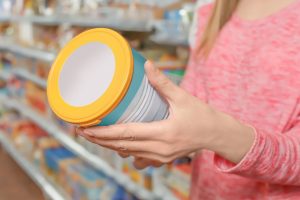
Why not just make your own formula?
Infant formula shortage has led to some parents attempting some desperate measures. One ER physician recounts parents feeding their infants diluted formula, leading to sodium deficiencies. This has led to some babies having a depleted fluid volume, resulting in a dangerously low blood pressure and low circulating oxygen volume. Electrolyte balances in infants is very dangerous. Their bodies, being small and still developing cannot cope with electrolyte depletion as compared to older children and adults. In extreme cases these imbalances can lead to seizures.
Some online advice advocates feeding cow’s milk to infants who are under 12 months of age. According to the American Association of Pediatrics for babies older than 6 months, cow’s milk is an option “for a brief period of time” but the AAP cautions it “should not become routine” due to concerns infants won’t get enough iron.
You should not make your own formula using a recipe found online or elsewhere, according to the FDA and the AAP. Homemade formulas can be dangerous, leading to contamination and low calcium, the FDA says. Reports of infant deaths using homemade formulas have been reported.
Available Resources
- Check with your baby’s pediatrician for any available sources of formula and if it is ok to switch formulas if necessary. Your babys doctor know what is best for your baby.
- In addition, ask your pediatrician if there are any goats milk formulas that would work
- Check online sources, such as larger online stores that may have formula available. Only purchase from well recognized distributors
- Check social media groups, local WIC offices, parents groups for any available formula.
- Contact the Human Milk Bank of America for guidance
- Locate your local Community Action Association for assistance
- In some instances, if breastfeeding had been discontinued, the La Leche league states that it may be possible to restart breastfeeding, also known as relactation. This would require time, patience, determination, and a cooperative baby, according to their website
Manufacturer Hotlines
- Gerber’s MyGerber Baby Expert : reach a certified nutrition or lactation consultant by phone, text, Facebook Messenger, web chat, or video call, who can help you identify a similar formula that may be more readily available
- Abbott’s Consumer Hotline: call 1-800-986-8540
- Abbott’s urgent product request line : ask your OBGYN or your infant’s pediatrician to submit an urgent product request by downloading and completing the form – PDF
- Reckitt’s Customer Service line: call 1-800 BABY-123 (222-9123)
Hopefully the formula shortage will be short lived. In the meantime, utilize the above resources to help you find the formula your infant needs. For future reference, once formula is available it is NOT hoarding to buy extra formula and put it away. Just like stocking extra food for the upcoming food shortage our government is telling us about, your infants food supply is a priority.
This morning I looked outside my large living room window and was greeted by snow. It had started snowing early morning, and the weather had decided it was a good idea to continue throughout the morning. Granted it wasn’t much snow, but it was enough to squelch my plans for getting my planter boxes up and ready for summer. I wanted to cry. Or at the very least feel sorry for myself and frustrated with the prospect of having to find indoor projects when my heart yearned to be outdoors, planting and working in the yard.
Resigning myself to the fact I would be working indoors most of the day (I had plenty of chores waiting for me indoors) I brewed some extra strong coffee and settled on the couch. The view out the window really was beautiful and tranquil. My thoughts turned to all the change and turmoil going on in the world, our country, town, families and even myself.
We are hearing of impending food shortages, escalating tensions in the world leading to possible war, fuel prices skyrocketing, avian influenza, unusual weather patterns (I am personally experiencing) leading to crop failures, supply disruptions in all sectors of industry and on and on.
And the pandemic is still ongoing….
We are being challenged to manage our stress and way of life as it changes before our very eyes. I could provide statistics from NAMI (National Alliance for Mentally Ill) the CDC, WHO etc. about how, over the past 2 plus years anxiety, depression, substance abuse, domestic abuse and even suicide has skyrocketed; however, I am pretty sure we are all aware of the stress and strain we have all been through, so I won’t be going down that path. We will explore our reactions and hopefully provide some suggestions and solutions to manage these stressors.
To begin with, there are many causes for mental illness/mental distress. Some forms are genetic and some are environmental. Either way adding stress onto an already full plate of emotions can easily overwhelm even the most mentally robust person.
In the case of the population with serious mental illness such as bipolar or other challenges this can be excruciatingly difficult.
What is our goal?
Our nervous systems are designed to activate chemicals such as adrenaline when faced with danger or perceived danger.
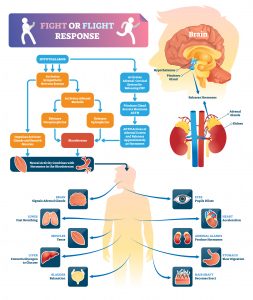
This is the fight or flight mechanism kicking in that much of our industrialized society lives in daily. News reports, traffic, the escalating cost of basic necessities can be perceived as danger/stress in our lives. The reaction is to either try to leave the situation or face it head on with aggression. If leaving the situation isn’t an option (which in many cases it may not be) We may turn to self-destructive (aggressive towards self) behaviors such as alcohol abuse, overeating, self-harm, or domestic abuse.
We may feel helpless in our situation without the tools to navigate these uncharted waters. Our goal is to calm the nervous system down so that we feel safe and secure and able to deal with whatever challenges that may come our way.
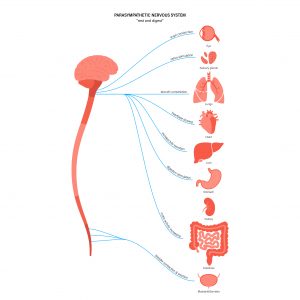
The action rest and digest state is where our bodies heal, our immune system is able to function at its best, blood pressure lowers, digestion is triggered and our decision making, and focus is appropriate.
4 steps to go from Reaction (fight or flight) to Action (Rest and digest)
- Have a positive mindset
A positive mindset is essentially exercise for the mind. It gets stronger and easier the more you do it. Start to focus on what you can do about a situation and not about what you can’t do. For instance, given the skyrocketing food prices there is much chatter on the internet about starting a garden, something not possible in an apartment setting. What could you do instead? Look for solutions. Tower gardens, and even starting sprouts for your salads are easy and inexpensive ways to start to take control of your food supply.
Essentially, instead of turning to destructive behaviors, start to focus on how to turn lemons into lemonade.
- Don’t get stuck with self-limiting beliefs
Self-limiting beliefs, such as not being good at crafts, exercise, gardening, school and coursework, etc. may not be true at all. We may have picked up on these beliefs as we grew up, or decided it was easier to believe we couldn’t do something rather than trying and finding out we can do it, given the proper training and tools. Even if you aren’t successful, the only failure isn’t trying something you really wanted to try.

- Take control of your life
This goes along with # 1 and 2. Along with a positive mindset and trying out things you really wanted to do that you thought you couldn’t do is taking control of your life. What we put in our minds and bodies has profound effects on our wellbeing. Be aware of how much time you spend watching and listening to the news. Check in with your feelings. Take note- are you feeling empowered and able to tackle the challenges or does the news leave you feeling helpless and unable to cope? Food plays an important part of this equation. Along with adequate hydration (being slightly dehydrated can lead to feelings of depression) how you eat (not rushed, enjoyable atmosphere) and what you eat can have profound effects on your well-being. Be sure to eat adequate fruits and vegetables. Plan your meals ahead and if able, try to have foods and meals prepared ahead of time. This eliminates stress eating and the accompanying poor food choices.
Physical exercise plays an integral part of any self-care routine. A 15 minute walk every day has been proven to beat anxiety and depression in mildly depressed populations. While walking, focus on your surroundings. Take deep breaths and let go of negative thoughts.
Practice an attitude of gratitude. Write down 5 things you are grateful for every day, no matter how small. Do this for 30 days. It really is life changing!
Get good quality sleep, go to bed at a regular time (if possible) Have an evening routine. This signals your body it is time for bed and it will be easier to fall asleep. If you are having difficulty sleeping or falling asleep try turning off the wifi in your home and set your phone to airplane mode. Cellular signals and wifi can disrupt our sleep patterns. In addition, studies have found that blue light emitted from our computers and cellphones has negative effects on sleep and overall health
If you are on medication for any mental health condition, be sure to keep your appointments and have adequate supply of medicines on hand. This is one of the most important steps you can take in taking charge of your life.
- Reach out to community and loved ones for support
You are not alone in your feelings. Sometimes just talking out your concerns can turn a corner and bring solutions. One of the unintended consequences of the pandemic was social isolation. We are social beings with a need to connect with each other.
If unable to find positive, supportive community or loved ones you feel comfortable talking to seek online mental health counselling.
The following are a few websites and phone numbers that can help you navigate this terrain.
National Alliance for Mental Illness (NAMI)
Suicide Prevention Hotline 800-273-8255
National Domestic Violence Hotline
After antibiotics, Restoring Gut Health
Antibiotics are literally lifesaving. In the most dire of circumstances they can bring someone back from the brink of death. They are powerful medicines. Our lives have greatly benefitted from the use of antibiotics, whether we have used them or not. They have saved millions of lives and the lives of our animals. At Jase medical we take antibiotic stewardship very seriously and advise only using them under the supervision of your healthcare provider. There is much concern over the use of antibiotics and its ability to wipe out the delicate flora of our gastrointestinal system. This concern is founded.
Antibiotics anti- against, biotic- life- against life.
Once someone starts a course of antibiotics the entire course must be completed to kill the invading organism. This comes at a cost to our bodies, however. While the antibiotic kills off the harmful organism it also kills off beneficial bacteria. A study titled “ Short-Term Effect of Antibiotics on Human Gut Microbiota” revealed that after taking certain antibiotics there was up to a tenfold decrease in gut microbiota. Some studies show gut bacteria can return to normal within 6 months. Other studies conclude it can take years. There is much debate over this topic. The type of antibiotic, age, sex, and overall health contribute to gut health and bacterial diversity returning to normal.
This can result in an opportunistic bacteria or yeast to overtake and invade the body. Some people are prone to yeast infections during the course of therapy. Sometimes prescription antifungals are used, in other instances a diet rich in probiotic rich yogurt, over the counter creams and mouthwashes can help.
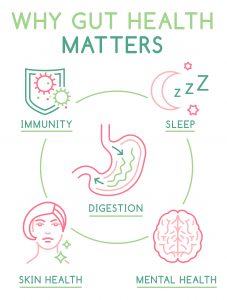
Our gut houses our immune system
Our immune system is housed in our intestines in tissue known as GALT- gut associated lymphatic tissue. Over 70 percent of our immune system is housed in this tissue, and when taking oral antibiotics, it puts a strain on this part of our immune system. Some of the cells the GALT produces prevent pathogens from adhering and taking up residence in our intestines. The GALT also includes Peyers patches. These patches, which are very similar to spleen cells, line the intestine and house white blood cells. They monitor and kill pathogenic bacteria and viruses when healthy and functioning. They also play an important role in in anti-inflammatory responses. Use of antibiotics puts a strain on this important and not too often talked about system.
In order to restore health to our entire gastrointestinal system functional medicine has come up with the acronym known as the 4 Rs to gut health- remove the offending substance, replace with beneficial foods and bacteria, reinoculate and repair the damage. There is no real definite way to repair the damage, however a diverse gut microbiome helps fight off a variety of pathogenic bacteria.
These steps should be taken during antibiotic therapy and should be a part of a health promoting lifestyle if not already in place.
Remove offending substance
This step can include removing foods that can cause opportunistic bacteria to grow, such as sugar and processed foods, sodas, and high sugar juices. In addition, avoid alcohol, cigarettes, and stress. These suppress the immune system and can make healing the gut very difficult.
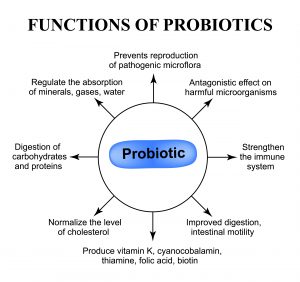
Replace with probiotic and prebiotic rich foods and probiotics
Probiotic rich foods
Probiotic rich foods help inoculate the gut with beneficial bacteria and promote include yogurt with active cultures, kefir, fermented foods such as sauerkraut, kimchi, tempeh, other fermented vegetables and kombucha. You don’t need a lot of these foods to benefit. A tablespoon of sauerkraut provides a group of bacteria called lactic acid bacteria which evidence shows helps fight cancer, contributes to cardiovascular health and even metabolism. Kefir is known for its powerful anti-inflammatory effects and fights viral infections. As a side note, kefir has been speculated to reduce or prevent cytokine storm associated with Covid 19.
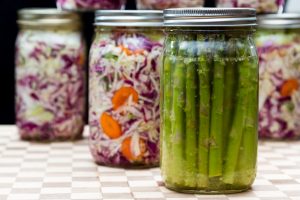

Prebiotic rich foods
A substance called butyrate is a short-chain fatty acid produced by your gut microbes when they break down dietary fiber. Butyrate has numerous health benefits. butyrate is produced when your gut microbes transform the dietary fiber you eat into these beneficial compounds. These compounds help feed the beneficial bacteria in your gut lining; without butyrate your beneficial bacteria wouldn’t survive. Butyrate is made from prebiotic rich foods that your intestine ferments and digests food. Foods high in fiber promote butyrate production such as whole grains, legumes, berries, fresh fruits, and vegetables. Inulin, a prebiotic fiber found in Jerusalem artichokes, chicory root, unripe(green) bananas, and asparagus has been found to positively modulate bacterial diversity during antibiotic therapy
A probiotic called Saccharomyces Boulardii (Trade name Florastor) has been shown to help prevent antibiotic related diarrhea and fight candida infections while on antibiotic therapy. It is a beneficial yeast and not a bacteria, so it isn’t affected by antibiotics. Saccharomyces Boulardii should be taken during antibiotic therapy and for a month after or as your healthcare provider recommends.
Reinoculate
Along with the above recommendations a good probiotic supplement may be necessary to restore gut health. Due to supply chain issues the probiotic I would recommend is no longer available, however here is a link-perhaps you may be able to source a similar product- check with your healthcare provider which probiotic they recommend.
Repair
To repair damage caused by illness and antibiotic therapy Supplementation with L-glutamine, vitamin C and zinc may be necessary. A good quality, balanced multivitamin is also a good idea.
Continue with above recommendations and make this change a permanent lifestyle.
In conclusion
As we enter this time of supply chain disruption and uncertainty the one asset, we and our loved ones have is our health. Without that nothing else matters.
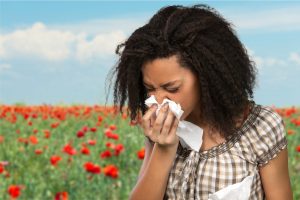
As the winter draws to an end and spring emerges, along with the warmer temperatures comes with it the increase in pollen and mold. This time of year can be a challenging, and miserable time of year for those suffering with seasonal allergies.
The CDC estimates that 60 million people in the United States suffer from seasonal allergies. Some people are more prone to allergies than others, such as asthmatics and those suffering from other respiratory diseases.
Is it a cold or allergy?
Colds and allergies share many of the same symptoms. How to tell if you are coming down with a cold or allergies?
According to WebMD:
A cold is an infection caused by a virus. Allergies are your immune system’s reaction to a substance like pollen or pet dander. Because the two conditions cause similar symptoms, like sniffles and stuffiness, many people get them mixed up. Knowing which is which can help you get the right treatment, and that will help you feel better faster.
It’s Probably Allergies If:
Your mucus is clear or watery. And it will stay clear, instead of becoming thick or discolored like it can with a cold, says Michael Benninger, MD, an ear, nose, and throat specialist at the Cleveland Clinic.
Your eyes are itchy or watery. It’s rare to have itchy eyes when you have a cold.
Your symptoms stay the same. “Allergies may feel extra intense for the first day or 2, but you’ll have the same symptoms day after day,” Benninger says.
You’ve had the sniffles for more than a week. A cold usually clears up in 7 to 10 days, but allergies can last several weeks or longer.
Your symptoms show up only in certain situations. Find yourself sneezing every spring or fall? Those are common times for allergies. ( Colds and the flu usually show up in the late fall and winter.) Another allergy tip-off: Being in a specific place makes you feel miserable — for example, in a house with a cat.

How to deal with allergies:
1) Remove the offending substance- are there houseplants in bloom that are causing your symptoms? Strong odors from room fresheners or perfumes can cause allergic reactions. Any animals that you may be allergic to? You may need to consider avoiding them if able.
2) Vacuum floors, walls and windowsills and wipe down all surfaces with a few drops of tea tree oil and water. The tea tree oil helps kill mold and keeps it from coming back.
3) Run a portable hepa filter in your room, especially in the room you sleep in. Leave it on for at least 24 hours with the door closed to begin with. This will clear out any allergens, dust and mold that may be in the air. After the initial 24 hours has passed run the filter during the day and try shutting off at night if the sound bothers you.
4) Eat raw, local honey. This helps prime your immune system to recognize your local pollen as a normal part of the environment, not something to react to.
5) Try cutting out dairy for a week. Studies have shown that eating dairy can exacerbate inflammatory responses and make allergies worse. Dairy also causes mucus buildup and can make symptoms worse.
6) Use a neti pot to rinse out sinus passages. This will remove the pollen and help alleviate allergies. Be sure to use sterile water when using the neti pot.
7) Try taking probiotics, specifically Kyo-Dophilus, a probiotic combination of lactobacilli and bifidobacteria in the form of a capsule sold in stores. This probiotic was shown to reduce allergic symptoms in a study conducted by University of Florida food, science and human nutrition department. It may not cure your allergies, however it is widely known that healthy gut bacteria regulate and strengthen the immune system and fight inflammatory responses.
8) Drink plenty of good quality water. This helps flush out irritants invading your sinus membranes.
9) Throw your pillows in the dryer on high every week for 15 minutes to kill dust mites. Dust mites can cause allergies and love the warm dark and damp environment your pillows provide. While you are at it, wash bedding frequently, not just bedsheets.
10) Make sure your air conditioner and heater filters, vents and crawlspaces are cleaned and changed periodically. You could inadvertently be blowing in irritants from the filters when you use these appliances.
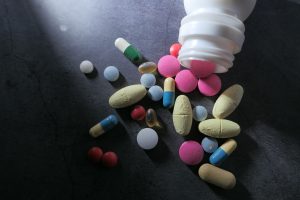
Allergy medications, prescription and over the counter
If you are on any allergy or asthma prescription medication, be sure to have plenty on hand. Make sure inhalers, epi-pens and medications aren’t expired and if they are getting close to expiration obtain a fresh supply.
Over the counter allergy medications– many used to be prescription- can have side effects. Benadryl, for example has been shown to cause driving impairment on par with alcohol ingestion. In fact, in California you can be arrested if under the influence of Benadryl or other medications that impair your driving. Allergy medicines can interact with other medications. Check with your primary care provider before taking any allergy medicines.
A good website for information on drug interactions and what to avoid is is the FDA site: Some Medicines and Driving Don’t Mix.
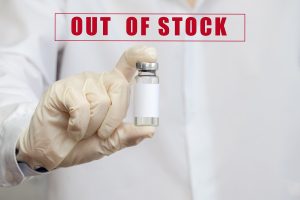
Among one of the most serious complications of a medical supply shortage is shortage of insulin for insulin dependent diabetics. The threat is getting very real, given current events.
The media has been very quiet about medical supply chains. Given the instability of the entire world, sanctions, ports closed, Chinas largest city in lockdown, the time to prepare is YESTERDAY. The next best time is NOW.
- Only three companies—Novo Nordisk, Sanofi, and Eli Lilly—provide insulin to the United States market.
- The American Diabetes Association (ADA) estimated that more than 30 million Americans, or more than 9 percent of the population live with diabetes
According to the ADA:” What is insulin dependent diabetes?
Diabetes is a problem with your body that causes blood sugar (also called blood glucose) levels to rise higher than normal. This is also called hyperglycemia.
When you eat, your body breaks food down into sugar and sends it into the blood. Insulin then helps move the sugar from the blood into your cells. When sugar enters your cells, it is either used as fuel for energy right away or stored for later use. In a person with diabetes, there is a problem with insulin. But, not everyone with diabetes has the same problem.
In type 1 diabetes, your immune system mistakenly treats the beta cells in your pancreas that make insulin as foreign invaders and destroys them. This can happen over a few weeks, months, or years.
When enough beta cells are gone, your pancreas stops making insulin or makes so little insulin that you need to take insulin to live. Type 1 diabetes develops most often in young people but can also appear in adults.”
Covid infection will lead to supply strain due to increase in insulin dependent diabetes diagnosis
Researchers found that people who had COVID-19 were about 40% more likely to develop diabetes within a year after recovering, compared to participants in a control group.
SARS-CoV-2 INFECTION LEADING TO TYPE 1 DIABETES
According to the NIH SARS-CoV-2 site titled “The diabetes virus” SARS-CoV-2 can interact with several proteins on the surface of cells in the body, allowing the virus to gain access to the cell. But those proteins are present in different levels for different cells. Researchers discovered that beta cells — the cells that make insulin in the pancreas — have a higher level of one of those proteins, neuropilin, than other pancreatic cells. In one study, researchers examined lab-grown beta cells infected with COVID-19 and found that they made less insulin when infected with the virus. Some of the cells died outright.
In the other study, researchers found that infection effectively reprogrammed some of those lab-grown cells. Instead of producing insulin, which breaks down blood sugar, they started producing glucagon, which increases blood sugar.
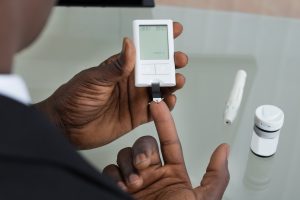
The following isn’t medical advice, consult your healthcare provider for your medical needs
What to do if you are unable to get insulin
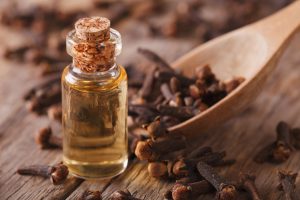
- Make sure you have plenty of supplies- lancets, syringes etc, Buy extra of everything and then some
- Follow a strict diet. Don’t deviate. Keep carbs to a minimum
- Be sure to have electrolyte solution or powder available in case of high blood sugar readings. Electrolytes are lost during these episodes. Keep hydrated!
- Keep stress level at a minimum, pray, meditate, read, do art, garden. Stress raises cortisol levels, which in turn raise blood sugar levels
- If there is truly no insulin you may want to consider rationing your doses. Your ideal blood sugar reading may be higher than ideal by doing this. The danger of this is ketoacidosis. (see below for signs and symptoms of ketoacidosis) This will be a judgement call on your part
- Have extra supplies- lancets, testing strips, syringes,
- Make sure you have enough batteries for your glucometer
- Have a backup glucometer along with supplies in case of malfunction
- Let everyone in your group know you are insulin dependent and educate all members on what normal glucose ranges are for you, signs, and symptoms of high and low blood sugar and what to do if your blood sugars are too high (or too low)
- Instruct all able-bodied members on use of your glucometer
Diabetic Ketoacidosis, a real threat during an insulin shortage
Diabetic ketoacidosis (DKA) is life-threatening—learn the warning signs to be prepared for any situation.
DKA is no joke, it’s a serious condition that can lead to diabetic coma or even death. DKA is caused by an overload of ketones present in your blood.
When your cells don’t get the glucose they need for energy, your body begins to burn fat for energy, which produces ketones. Ketones are chemicals that the body creates when it breaks down fat to use for energy. The body does this when it doesn’t have enough insulin to use glucose, the body’s normal source of energy. When ketones build up in the blood, they make it more acidic. They are a warning sign that your diabetes is out of control or that you are getting sick.
DKA usually develops slowly. But when vomiting occurs, this life-threatening condition can develop in a few hours. Early symptoms include the following:
- Thirst or a very dry mouth
- Frequent urination
- High blood glucose (blood sugar) levels
- High levels of ketones in the urine
Then, other symptoms appear:
- Constantly feeling tired
- Dry or flushed skin
- Nausea, vomiting, or abdominal pain. Vomiting can be caused by many illnesses, not just ketoacidosis. If vomiting continues for more than two hours, contact your health care provider.
- Difficulty breathing
- Fruity odor on breath
- A hard time paying attention, or confusion
Warning! DKA is dangerous and serious. If you have any of the above symptoms, contact your health care provider IMMEDIATELY, or go to the nearest emergency room of your local hospital.
Symptoms of low blood sugar
(Just as life threatening but less common if lack of insulin)
If blood sugar levels become too low, signs and symptoms can include:
- An irregular or fast heartbeat
- Fatigue
- Pale skin
- Shakiness
- Anxiety
- Sweating
- Hunger
- Irritability
- Tingling or numbness of the lips, tongue or cheek
As hypoglycemia worsens, signs and symptoms can include:
- Confusion, abnormal behavior or both, such as the inability to complete routine tasks
- Visual disturbances, such as blurred vision
- Seizures
- Loss of consciousness
When to see a doctor
Seek a doctor’s help immediately if:
- You have what might be hypoglycemia symptoms and you don’t have diabetes
- You have diabetes and hypoglycemia isn’t responding to treatment, such as drinking juice or regular soft drinks, eating candy, or taking glucose tablets
Seek emergency help for someone with diabetes or a history of hypoglycemia who has symptoms of severe hypoglycemia or loses consciousness.
















